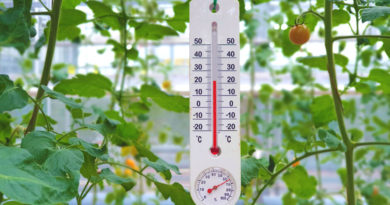Be Gentle: Transplanting Seedlings and Clones
Growing cannabis can be an extremely rewarding endeavor, giving you a feeling of empowerment and sense of accomplishment.
Allegedly, your home grown will taste better and even lift you higher compared to buying cannabis you aren’t as intimate with. Knowing where your cannabis came from and that extra love you put into it somehow just makes the buds better. But don’t take my word for it, give it a try yourself!
Begin your crop with a great head start by safely transplanting the young clones or seedlings to ensure they thrive. The grow medium being used may vary greatly between anything from soil to peat moss, coco coir, stonewool cubes, or grow rocks. Sometimes there is no medium at all. Regardless of whether you’re transplanting seedlings or clones, the method is the same. The steps in transplanting cuttings or seed starts are simply to remove the rooted plant from its container and transplant it into its new container as gently as possible. Be sure to carefully cover the roots completely without damaging them. If no medium is being used, such as when transplanting into an aeroponics system, be sure the plant is properly secured to the grow system without allowing the roots to be damaged.
Put Down Some Roots
Before transplanting, your new plant should have established some root growth, which is apparent by observing new foliage; this demonstrates the plant is ready to take off into more aggressive vegetation.
At this stage, not too many things can go wrong, however, there are some parameters to consider. Too much of a good thing can be a bad thing. Plain water will suffice until the roots have been well established. From here, a little extra care can go a long way to jump start vegetative growth after transplanting.
Clones and seedlings are more fragile than most other stages of plant growth, so be sure to filter the water before use. Adjust water pH to 5.8-6.2 before each watering. Water quality is important, as chemicals in tap water and minerals or contaminants in some well water can negatively affect plants. Consider a reverse osmosis system for providing them with the cleanest water possible.

Go Leafs Go
As soon as new root growth occurs below, you will notice new leaf growth above. At this point, the plant is hungry and it is time to transplant to allow for more growth. Giving your plant what it needs when it needs it ensures rapid growth and prevents stagnation.
Nutrients are important to consider when transplanting rooted clones or seedlings. The method of feeding nutrients will vary depending on the grow style you have chosen. Whether feeding through the soil mix, or a pre-mixed reservoir, be sure to purchase nutrients designed for your type of setup. Unless you desire learning the science, don’t worry too much about the chemistry of it all.
Nutrient and soil companies have utilized the services of PhDs to design their products. Choose a brand that is designed for the method you’ve chosen for your garden and just get growing! Then, adjust as necessary.
Water World
After transplanting, water heavily to allow the roots plenty of moisture. Then, over the next several days, monitor the moisture level closely to allow for vital air exposure to the roots. Don’t let them dry out and also be sure not to over-water the transplants. In general, plants thrive by allowing for saturation, then air exposure, and repeat this process throughout the life cycle. If transplanting into a hydroponic or aeroponic setup, be sure to use an air pump and air stones in your reservoir for proper aeration. As in springtime, young plants generally enjoy more water than plants in fall that are about to be harvested.
Consider using rooting hormones to increase root production after transplant. Choose a water-soluble product if transplanting into hydro rather than soil.
Read also:
Friends with Fungi
Use mycorrhiza to jumpstart a network of beneficial fungi around the rhizosphere. This will allow for expanded absorption of macro– and micronutrients to provide for increased vegetation rates early on. If the mycorrhizae are fed with sugars throughout the growth process, the beneficial fungi will continue to provide these benefits throughout the life of the plants, allowing for maximum yields and better quality cannabis.
Beneficial bacteria can be used to further increase these benefits. Biological diversity of the rhizosphere, also known as the root zone, is key in maintaining healthy plants and great tasting buds. Like beneficial fungi, bacteria also eat sugars. The plants thrive on the enzymes and waste created by these bacteria. The soil web can be inoculated with these products with an initial heavy feeding and periodic light feedings. If growing with hydroponics or aeroponics, inoculate lightly throughout the entire growing process by using these products in each feeding.
After rooting clones from a known female mother plant that is in a vegetative state or popping cannabis seeds, be prepared with the proper nutrients and additives to transplant your plants following the directions described in this article. Keep them happy throughout their life cycle by maintaining the proper environment and providing them some TLC and you’ll likely enjoy the best THC you’ve ever grown. Happy gardening!




